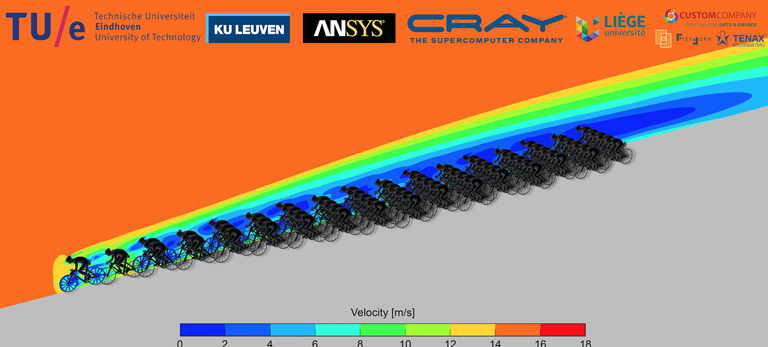The Scientific Reason Pelotons Go So Freakin’ Fast
Researchers crunched the numbers, and the energy savings of a group ride are staggering.
Everyone knows drafting saves energy. That’s why cyclists ride in pacelines, so everyone can go faster while doing less total work.
Now, researchers have discovered that the benefits of pack riding may be even greater than you thought: You can nearly double your energy savings by riding in the belly of a pack – effectively reducing your aerodynamic drag up to a staggering 96 percent, according to a new study published in the Journal of Wind Engineering and Industrial Aerodynamics. That’s a far greater energy savings than anyone previously believed (but Tour de France riders could probably tell you!).
Scientists have long believed that riders in a pack experienced the same aerodynamic drag reduction benefits as riders in a paceline, where riders in the back can enjoy drag reductions of 50 to 70 percent compared to the rider in the front, or what they would face riding alone. But based off reports from pro riders that you barely have to pedal in the heart of the peloton, a group of scientists had a notion that the aerodynamic energy savings in the pack were much higher. So they put a simulated pack of 121 riders through a complex series of four wind-tunnel campaigns, including a nearly three billion calculation points, to test their hypothesis.

A simulation of 121 cyclists showed that riders in the belly of the pack had a significantly lower aerodynamic drag Courtesy of Bert Blocken, Eindhoven University of Technology and KU Leuven
They were right. According to their calculations, the riders in the middle of the pack were so protected from the wind that they faced just 10 percent of the air resistance of the riders on the pointy end of the pack. Those in the sweet spot of the mid-rear section had to overcome a mere four percent of aerodynamic drag.
Considering that when you’re hammering down the road at 48 kilometres per hour on your lonesome, 90 percent of your power is going into overcoming air resistance, that’s a heck of a lot of free speed!
Of course, this scenario assumes you’re motoring down a straight, wide (and presumably closed) road, where all the group aerodynamic benefits are in full effect, which is something most of us non-pros don’t have the luxury of experiencing. And there are inherent risks to riding in a tight bunch, as anyone who’s ever watched the peloton topple like dominoes from a touch of wheels knows.
But if you find yourself running out of gas during a Gran Fondo, it’s good to know you can get to the finish doing a fraction of the work by just getting yourself in a group.
This article originally appeared on bicycling.com.

